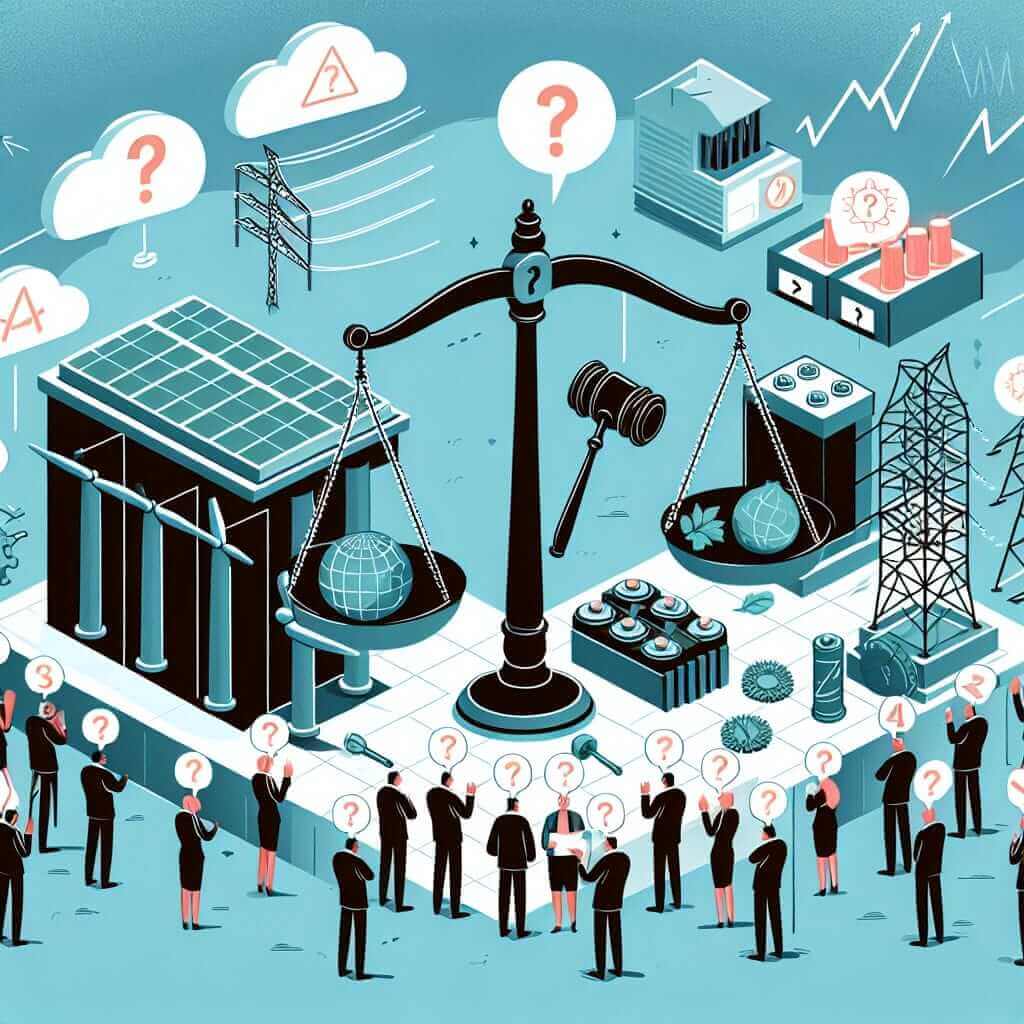The IELTS Reading section is a significant part of the IELTS test, and having knowledge of specific topics can certainly boost your performance. One recurring subject that has appeared in past exams is the challenges of integrating renewable energy into the grid. Given the growing importance of renewable energy worldwide, it’s likely this topic may feature in future tests as well. This article examines different aspects of this topic, providing a full practice test that mirrors the actual IELTS Reading exam format.
Nội dung bài viết
By working through this practice test, you’ll become familiar with the kinds of questions asked, as well as the vocabulary and grammatical structures often used.
Practice IELTS Reading Test: Renewable Energy Integration Challenges
Reading Passage
Integration of renewable energy sources such as solar, wind, and hydropower into the existing electrical grid has led to numerous challenges. Unlike traditional fossil fuels, renewable energy sources produce electricity intermittently, depending on weather and time of day. This intermittent production can destabilize the grid, leading to unreliable power supply.
Moreover, the existing grid infrastructure was designed to handle large-scale, centralized power plants that operate continuously. Renewable energies, however, are often distributed over a wide geographical area and may not easily connect to this infrastructure. Upgrading the grid to accommodate these diverse sources requires significant investment and involves complex technological hurdles.
Energy storage solutions, such as batteries, are crucial to overcoming the intermittency issue. These storage solutions, however, are currently expensive and have limited capacity. Until technological advancements make storage more cost-effective and efficient, the reliance on fossil fuels will likely persist.
Another major challenge is regulatory and policy-related. Governments need to design policies that not only promote the use of renewable energy but also address the technical and financial challenges of integrating these sources into the grid. Furthermore, public acceptance and cooperation are vital. The transition to renewable energy often faces opposition due to various social and economic factors.
Ultimately, while the integration of renewable energy into the grid presents formidable challenges, it also offers significant environmental and economic benefits. Continued research and development, along with supportive governmental policies, can pave the way for a more sustainable energy future.
Questions
Multiple Choice Questions
-
Why is the intermittency of renewable energy a problem for grid stability?
a. It leads to uninterrupted power supply.
b. It stabilizes the grid.
c. It causes unreliable power supply.
d. It mitigates the need for fossil fuels. -
What is one primary reason for the difficulty in integrating renewable energy into the existing grid infrastructure?
a. They are more reliable than fossil fuels.
b. They are decentralized and geographically spread out.
c. They produce power consistently.
d. They require less investment.
True/False/Not Given
- The current grid infrastructure was designed for intermittent power production. (True/False/Not Given)
- Energy storage solutions are currently expensive and inefficient. (True/False/Not Given)
- The transition to renewable energy is universally accepted by the public. (True/False/Not Given)
Matching Information
Match each of the following statements with the correct paragraph in the passage.
- ___ Government policies are essential for promoting renewable energy and addressing its integration challenges.
- ___ The distributed nature of renewable energy sources makes them difficult to connect to the existing grid.
Answers
- C – The intermittent production can destabilize the grid, leading to unreliable power supply.
- B – Renewable energies are decentralized and geographically spread out.
- False – The existing grid infrastructure was designed to handle large-scale, centralized power plants that operate continuously.
- True – Energy storage solutions, such as batteries, are currently expensive and have limited capacity.
- False – The transition to renewable energy often faces opposition due to various social and economic factors.
- Paragraph 4 – Governments need to design policies that not only promote the use of renewable energy but also address the technical and financial challenges.
- Paragraph 2 – Renewable energies are often distributed over a wide geographical area and may not easily connect to this infrastructure.
Common Mistakes
Many students make the following common mistakes when answering such questions:
- Failing to locate specific information due to lack of skimming and scanning skills.
- Misunderstanding the True/False/Not Given type questions, often confusing True with Not Given or vice versa.
- Misinterpreting the questions due to limited vocabulary or unfamiliarity with the topic.
Vocabulary
Here are some important words from the passage, along with their meanings and pronunciations:
- Intermittent (/ˌɪntərˈmɪtənt/) – occurring at irregular intervals; not continuous or steady.
- Grid (/ɡrɪd/) – a network of electrical transmission lines connecting power plants to various users.
- Infrastructure (/ˈɪnfrəˌstrʌktʃər/) – the basic physical and organizational structures needed for the operation of a society or enterprise.
- Destabilize (/ˌdiːˈsteɪbəlaɪz/) – to make (something) unstable.
- Decentralized (/diːˈsentrəlaɪzd/) – distributed or spread over a wide area.
Grammar Point
One grammatical feature to note from the passage is the use of relative clauses to give important additional information. For example, “Energy storage solutions, such as batteries, are crucial to overcoming the intermittency issue.” Here, “such as batteries” is a non-restrictive clause providing extra info about energy storage solutions.
Conclusion
Effective preparation for the IELTS Reading section requires familiarity with various topics, syntactical structures, and question types. A topic like “What are the challenges of integrating renewable energy into the grid?” is highly relevant and likely to appear in the exam due to its growing importance. Practice regularly, learn new vocabulary, and focus on understanding the different question types to excel in your IELTS Reading exam.
By leveraging these strategies and continuously practicing, you can significantly improve your reading skills and increase your chances of attaining a high score in the IELTS Reading section. Happy studying!

For more insights on challenges in renewable energy policies, check out our article on challenges in implementing renewable energy policies.
For further reading on grid stability impacted by renewable energy, see our detailed discussion on the impact of renewable energy on grid stability.